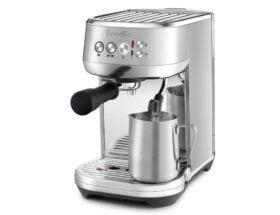
Powdered Milk vs Coffee Creamer: A Comparison
Welcome to our comprehensive comparison between powdered milk and coffee creamer! In this blog post, we will dive into the world of coffee additives and explore the differences between these two popular choices. We’ll discuss their characteristics, uses, and effects on the flavor of your beloved cup of Joe. Whether you’re new to coffee customization or a seasoned enthusiast, this guide will provide you with valuable insights and tips on how to choose the right additive for your coffee. So, grab your favorite brew and let’s explore the fascinating realm of powdered milk vs coffee creamer!
Table of Contents
Powdered Milk vs Coffee Creamer
When it comes to adding a creamy and rich taste to your coffee, there are several options to choose from. Two popular choices are powdered milk and coffee creamer. While both serve the purpose of enhancing your coffee experience, they have distinct characteristics and effects on the flavor profile of your favorite brew. In this blog post, we will dive deeper into the differences between powdered milk and coffee creamer, exploring their uses, nutritional content, and preparation methods. So whether you are a coffee enthusiast or simply looking to elevate your morning cup of joe, this guide will help you make an informed decision in selecting the right additive for your coffee.
Characteristics and Uses
Powdered milk, as the name suggests, is milk that has been dehydrated and turned into a fine powder. It is derived from cow’s milk and contains all the essential nutrients found in regular milk. Powdered milk is a versatile option, as it can be stored for longer periods without refrigeration and is often used as a convenient alternative in places where fresh milk is not easily accessible.
Coffee creamer, on the other hand, is a non-dairy substitute for milk or cream. It is typically made from a combination of hydrogenated vegetable oils and sweeteners to provide a creamy taste and texture. Coffee creamers come in a variety of flavors, such as vanilla, hazelnut, and caramel, allowing you to experiment and add a touch of indulgence to your coffee.
Nutritional Content
When it comes to nutritional content, powdered milk has an advantage over coffee creamer. Powdered milk retains the essential nutrients found in regular milk, including calcium, protein, and vitamins. It is a healthier choice for those looking to incorporate additional nutritional value into their coffee.
On the other hand, coffee creamer is often higher in calories and contains additives like artificial sweeteners and flavors. While it may offer a creamier taste, it lacks the nutritional benefits of real milk or powdered milk.
Effects on Coffee Flavor
The choice between powdered milk and coffee creamer can have a significant impact on the flavor of your coffee. Powdered milk tends to produce a more authentic and natural taste, allowing the flavors of the coffee beans to shine. It subtly enhances the sweetness and richness of the brew without overpowering it.
Coffee creamer, with its added flavors and sweeteners, can alter the taste of your coffee. It provides a sweeter and creamier profile, which may be preferable if you enjoy a more dessert-like coffee experience. However, it can mask some of the nuances and complexities of specialty coffee.
Preparation Methods
When using powdered milk, it is important to follow the instructions on the packaging for the appropriate water-to-powder ratio. Dissolve the powdered milk in warm water before adding it to your coffee. Stir well to ensure a smooth and creamy texture.
Coffee creamer is typically added directly to coffee without prior dilution. However, it is recommended to start with a small amount and adjust according to your taste preferences. You can experiment with different flavors and quantities to find the perfect balance for your ideal cup of coffee.
Did you know that coffee creamer was originally created as a substitute for fresh milk during World War II? The scarcity of milk prompted the invention of powdered creamers, which were easier to transport and had a longer shelf life. Since then, coffee creamer has become a popular choice for those who prefer a non-dairy option or simply want a convenient way to enhance the flavor of their coffee.
Tips for Choosing the Right Additive
Choosing between powdered milk and coffee creamer ultimately comes down to personal preference. Here are a few tips to help you make the right decision:
- Consider your nutritional needs: If you are looking for added nutritional value, opt for powdered milk. If you are monitoring your calorie intake or have dietary restrictions, a low-calorie coffee creamer may be a better choice.
- Experiment with flavors: Coffee creamers offer a wider range of flavors to liven up your coffee. If you enjoy variety and want to explore different taste profiles, coffee creamer is a great option.
- Consider the coffee flavor: If you enjoy the natural flavors of specialty coffee, powdered milk is a better choice as it allows the coffee to shine. If you prefer a sweeter and more indulgent coffee experience, coffee creamer may be the way to go.
Now that you have a comprehensive understanding of powdered milk and coffee creamer, you can make an informed decision based on your preferences and needs. Remember, the choice is entirely subjective, so don’t be afraid to experiment and find your perfect cup of coffee. Whether you choose powdered milk or coffee creamer, both options will undoubtedly enhance your coffee experience.
Step by Step Guide: Choosing the Right Additive for Your Coffee
1. Know the Difference: Powdered Milk vs. Coffee Creamer
Understanding the differences between powdered milk and coffee creamer is essential in choosing the right additive for your coffee.
- Powdered Milk: Powdered milk is made by dehydrating regular milk. It typically contains more nutrients and offers a more natural taste to your coffee.
- Coffee Creamer: Coffee creamers, on the other hand, are non-dairy alternatives made with hydrogenated oils, sweeteners, and flavorings. They come in various flavors and can give your coffee a creamy and indulgent taste.
2. Consider Flavor Preference
Decide if you want to enhance the natural flavors of your coffee with powdered milk or add a touch of sweetness and creaminess with coffee creamer.
- If you enjoy the rich, smooth taste of coffee and want to maintain its natural flavors, opt for powdered milk.
- If you prefer a sweeter and creamier cup of coffee, choose coffee creamer in flavors like vanilla, hazelnut, or caramel.
When choosing an additive for your coffee, remember that experimentation is key. Start with a smaller amount of powdered milk or coffee creamer, and gradually adjust to find your desired level of creaminess and flavor. Tasting and adjusting along the way will lead you to the perfect balance that suits your unique taste preferences.
3. Check Nutritional Content
Consider the nutritional aspects of the additives you choose for your coffee.
- Powdered milk is a good source of protein, calcium, and vitamins.
- Coffee creamers often contain artificial ingredients and may have higher levels of sugar and fat.
- If you have specific dietary restrictions or preferences, check the labels of the additives to ensure they meet your requirements.
4. Experiment with Ratios
Once you’ve chosen between powdered milk and coffee creamer, it’s time to incorporate them into your coffee. Experiment with different ratios to find the perfect balance for your taste buds.
- For powdered milk, start with 1-2 teaspoons per cup of coffee. Adjust the amount to achieve your desired creaminess.
- When using coffee creamer, a small dollop often goes a long way, so begin with a small amount and add more if needed.
5. Consider Preparation Methods
Pay attention to the preparation methods for each additive to ensure the best results.
- Powdered Milk: Dissolve the powdered milk in warm water before adding it to your coffee. This helps it blend better and prevents clumps.
- Coffee Creamer: Coffee creamers can be added directly to your cup of coffee, but if you’re using a powder or liquid concentrate, follow the instructions on the packaging for the best results.
6. Taste and Adjust
Once you’ve added the additive to your coffee, give it a taste. If it doesn’t meet your expectations, feel free to adjust the amount or try a different brand or flavor.
- Remember, everyone’s taste preferences differ, so it may take a bit of experimentation to find your perfect combination.
By following these steps, you’ll be well on your way to enhancing your coffee experience with the perfect additive – whether it’s powdered milk or coffee creamer!
Wrap Up
In conclusion, when it comes to choosing between powdered milk and coffee creamer as additives for your coffee, there are several factors to consider. Powdered milk offers the advantage of being a more natural and nutritionally rich option, providing a creamy texture and a slight milky taste to your coffee. On the other hand, coffee creamer is a convenient and versatile choice, available in various flavors and offering a long shelf life.
It’s essential to understand how each additive affects the flavor and overall coffee experience. Experimentation is key to finding the perfect balance that suits your taste buds. Remember to consider the nutritional content and potential health impacts of additives, especially if you have specific dietary requirements or preferences.
Whether you choose powdered milk or coffee creamer, ensuring proper preparation and storage is crucial for maintaining freshness and taste. Follow our tips on measuring, dissolving, and storing your chosen additive to enhance your coffee experience.
We hope this comprehensive comparison has provided you with valuable insights into the differences between powdered milk and coffee creamer. Now it’s up to you to make an informed decision based on your taste preferences, dietary considerations, and personal preferences. Cheers to the perfect cup of coffee!
We would love to hear from you! Leave a comment below and share your thoughts on powdered milk and coffee creamer. Which do you prefer, and why? Have any additional tips for enhancing coffee with additives? Join the conversation and share your knowledge!









